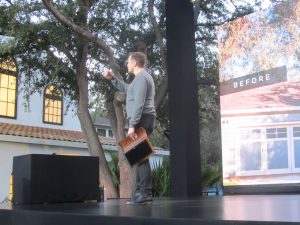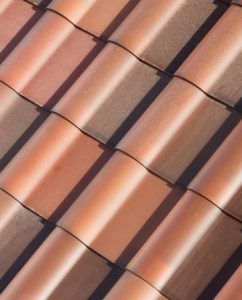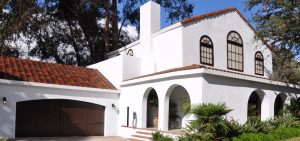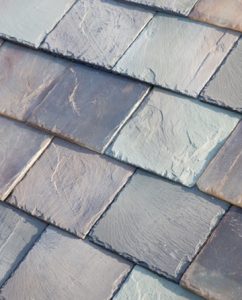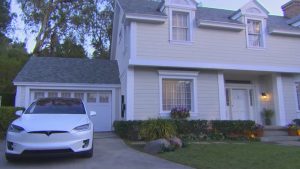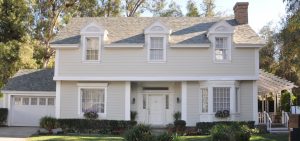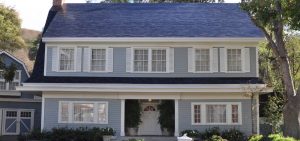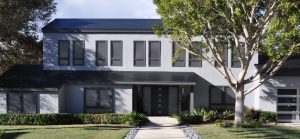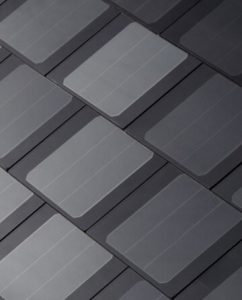News
Which style of Tesla’s Solar Roof tile is right for you?
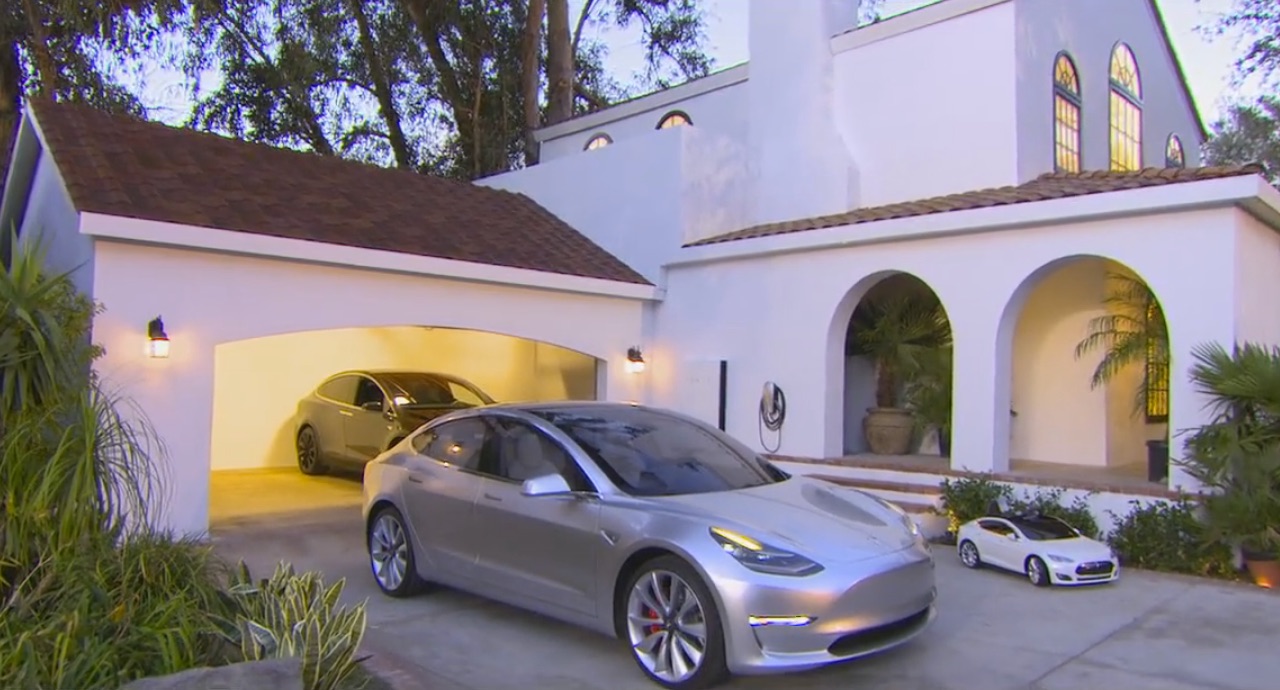
With the explicit goal of making solar panels as appealing as electric cars have become, Tesla CEO Elon Musk has unveiled the company’s newest product: solar roof tiles manufactured with durable, long lasting tempered-glass. The slogan, “Power from above, beauty from the street” captured the product and theme of the unveiling, which took place at Universal Studios in Los Angeles with the sun ready to set in the background.
The new roofs will be a collaboration between SolarCity and Tesla and can be combined with Tesla’s Powerwall 2 home battery. The tiles are hydrographically printed. Musk explained that this process that makes each one a “special snowflake.”
Throughout the product unveiling, Musk emphasized that these solar tiles, which will be integrated into the roof and invisible when viewed from the street, offer a much more attractive option as compared with currently-used solar technology. The tiles will be soon available to the public in four distinct styles. Each is architecturally significant to a home’s core design. Four distinct tile styles reinforce the importance of connecting an architectural past to the Tesla vision of a sustainable future. The “beautiful, affordable, and seamlessly integrated” glass tiles have significant historic origins and contemporary appeal.
Tuscan Glass Tile
This roof, sometimes called Italian Renaissance style, is an element of a home integrated with its setting. Consistent with Musk’s vision of sustainable solutions to a “mine-and-burn” hydrocarbon economy, landscape architecture and gardens balance Tuscan house design. The roof structure is a combination of side gable, cross gable, combined hip and gable, or hipped configuration, often with projecting wings and deep roof overhangs and eaves. The style borrows details from the entire history of Spanish architecture, with architectural elements of paired French doors, classic arches, and some use of wrought iron.
Slate Glass Tile
The most desirable roofing material for more than 1,000 years, slate has been acclaimed for its elegance and unique character. It required a craft person’s expertise and skill in hand shaping and laying it on the roof. The Tesla version likely will resemble thin tiles split into uniform thicknesses. Slate’s aesthetic appearance is due to a wide variety of rich colors and textures that are combined in nearly endless combinations. Found on virtually every class of structure, slate roofs are perhaps most often associated with institutional, ecclesiastical, and government buildings, yet slate was often used on farm and agricultural buildings as well.
- Credit: Tesla
Textured Glass Tile
Textured roofing tiles were used in Neolithic China as early as 10.000 B.C. and 5000 years ago in Babylon. By the end of the nineteenth century, as the use of glazed roofing tiles grew, textured tiles became among the most ornamental and distinctive roofing materials. Now featured on many historic buildings, their aesthetic qualities include many shapes, colors, patterns, and textures. Architecturally, a field of textured tiles often covers the majority of a roof’s flat surface, with decorative tiles used along the peak of the roof. In more ornamental installations, the field of tiles may have areas of patterning created by tiles of different shapes, dimensions, or color variations ranging from deep browns to pale pinks to buff or beige. Their interesting appearance has often made textured tile roofs prominent stylistic features of historic structures.
- Credit: Tesla
Smooth Glass Tile
Flat smooth tile offers clean lines that compliment a contemporary design with unassuming, no-frills elegance. It contains a straightforward, stripped-down geometry and a means of securing an organic bond between old, existing architecture and new buildings. This is particularly important in optically sensitive areas where contemporary architecture accentuates an important visual impression. All parts of the resultant ensemble stem from a single smooth tile source, which appears as if it grew up over the centuries. Smooth glass tiles can contribute to an eclectic conglomeration of heritage-listed façades and modern stylistic elements. Optically robust, these tiles now provide an interplay of nuances that was once typical of hand-crafted products.
Tying Architecture and Aesthetics to Energy Power Solutions
The Tesla solar roof tiles offer high efficiency solar power which will produce energy even during high temperature days. Color louver film allows cells to blend into the roof while exposing them to the sun above. With tempered glass, the material is extremely impact resistant. The solar integrates with Tesla home batteries to collect energy during the day for use in the evening once the sun goes down. Musk tweeted that “solar glass tiles can also incorporate heating elements, like rear defroster on a car, to clear roof of snow and keep generating energy.”
Tesla expects to start installing the solar roofs next summer. More durable than normal roofing tiles, the solar roofs can be tied to the updated Powerwall 2 home battery (14 kWh, $5500) which the company also showcased at the unveiling event.
The announcement of this solar innovation implies that the Tesla/ SolarCity merger will receive upcoming shareholder votes and approval.
If you’re considering solar for your home or business, we encourage you to get a solar cost estimate first, based on your monthly utility bill and location. The service is being provided by an affiliate partner and fan to Teslarati.

News
Tesla FSD Supervised wins MotorTrend’s Best Driver Assistance Award
The decision marks a notable reversal for the publication from prior years, with judges citing major real-world improvements that pushed Tesla’s latest FSD software ahead of every competing ADAS system.

Tesla’s Full Self-Driving (Supervised) system has been named the best driver-assistance technology on the market, earning top honors at the 2026 MotorTrend Best Tech Awards.
The decision marks a notable reversal for the publication from prior years, with judges citing major real-world improvements that pushed Tesla’s latest FSD software ahead of every competing ADAS system. And it wasn’t even close.
MotorTrend reverses course
MotorTrend awarded Tesla FSD (Supervised) its 2026 Best Tech Driver Assistance title after extensive testing of the latest v14 software. The publication acknowledged that it had previously criticized earlier versions of FSD for erratic behavior and near-miss incidents, ultimately favoring rivals such as GM’s Super Cruise in earlier evaluations.
According to MotorTrend, the newest iteration of FSD resolved many of those shortcomings. Testers said v14 showed far smoother behavior in complex urban scenarios, including unprotected left turns, traffic circles, emergency vehicles, and dense city streets. While the system still requires constant driver supervision, judges concluded that no other advanced driver-assistance system currently matches its breadth of capability.
Unlike rival systems that rely on combinations of cameras, radar, lidar, and mapped highways, Tesla’s FSD operates using a camera-only approach and is capable of driving on city streets, rural roads, and freeways. MotorTrend stated that pure utility, the ability to handle nearly all road types, ultimately separated FSD from competitors like Ford BlueCruise, GM Super Cruise, and BMW’s Highway Assistant.
High cost and high capability
MotorTrend also addressed FSD’s pricing, which remains significantly higher than rival systems. Tesla currently charges $8,000 for a one-time purchase or $99 per month for a subscription, compared with far lower upfront and subscription costs from other automakers. The publication noted that the premium is justified given FSD’s unmatched scope and continuous software evolution.
Safety remained a central focus of the evaluation. While testers reported collision-free operation over thousands of miles, they noted ongoing concerns around FSD’s configurable driving modes, including options that allow aggressive driving and speeds beyond posted limits. MotorTrend emphasized that, like all Level 2 systems, FSD still depends on a fully attentive human driver at all times.
Despite those caveats, the publication concluded that Tesla’s rapid software progress fundamentally reshaped the competitive landscape. For drivers seeking the most capable hands-on driver-assistance system available today, MotorTrend concluded Tesla FSD (Supervised) now stands alone at the top.
News
Elon Musk’s Grokipedia surges to 5.6M articles, almost 79% of English Wikipedia
The explosive growth marks a major milestone for the AI-powered online encyclopedia, which was launched by Elon Musk’s xAI just months ago.

Elon Musk’s Grokipedia has grown to an impressive 5,615,201 articles as of today, closing in on 79% of the English Wikipedia’s current total of 7,119,376 articles.
The explosive growth marks a major milestone for the AI-powered online encyclopedia, which was launched by Elon Musk’s xAI just months ago. Needless to say, it would only be a matter of time before Grokipedia exceeds English Wikipedia in sheer volume.
Grokipedia’s rapid growth
xAI’s vision for Grokipedia emphasizes neutrality, while Grok’s reasoning capabilities allow for fast drafting and fact-checking. When Elon Musk announced the initiative in late September 2025, he noted that Grokipedia would be an improvement to Wikipedia because it would be designed to avoid bias.
At the time, Musk noted that Grokipedia “is a necessary step towards the xAI goal of understanding the Universe.”
Grokipedia was launched in late October, and while xAI was careful to list it only as Version 0.1 at the time, the online encyclopedia immediately earned praise. Wikipedia co-founder Larry Sanger highlighted the project’s innovative approach, noting how it leverages AI to fill knowledge gaps and enable rapid updates. Netizens also observed how Grokipedia tends to present articles in a more objective manner compared to Wikipedia, which is edited by humans.
Elon Musk’s ambitious plans
With 5,615,201 total articles, Grokipedia has now grown to almost 79% of English Wikipedia’s article base. This is incredibly quick, though Grokipedia remains text-only for now. xAI, for its part, has now updated the online encyclopedia’s iteration to v0.2.
Elon Musk has shared bold ideas for Grokipedia, including sending a record of the entire knowledge base to space as part of xAI’s mission to preserve and expand human understanding. At some point, Musk stated that Grokipedia will be renamed to Encyclopedia Galactica, and it will be sent to the cosmos.
“When Grokipedia is good enough (long way to go), we will change the name to Encyclopedia Galactica. It will be an open source distillation of all knowledge, including audio, images and video. Join xAI to help build the sci-fi version of the Library of Alexandria!” Musk wrote, adding in a later post that “Copies will be etched in stone and sent to the Moon, Mars and beyond. This time, it will not be lost.”
News
Tesla Model 3 becomes Netherlands’ best-selling used EV in 2025
More than one in ten second-hand electric cars sold in the country last year was a Tesla Model 3.

The Tesla Model 3 became the most popular used electric car in the Netherlands in 2025, cementing its dominance well beyond the country’s new-car market.
After years at the top of Dutch EV sales charts, the Model 3 now leads the country’s second-hand EV market by a wide margin, as record used-car purchases pushed electric vehicles further into the mainstream.
Model 3 takes a commanding lead
The Netherlands recorded more than 2.1 million used car sales last year, the highest level on record. Of those, roughly 4.8%, or about 102,000 vehicles, were electric. Within that growing segment, the Tesla Model 3 stood far ahead of its competitors.
In 2025 alone, 11,338 used Model 3s changed hands, giving the car an 11.1% share of the country’s entire used EV market. That means more than one in ten second-hand electric cars sold in the country last year was a Tesla Model 3, Auto Week Netherlands reported. The scale of its lead is striking: the gap between the Model 3 and the second-place finisher, the Volkswagen ID3, is more than 6,700 vehicles.
Rivals trail as residual values shape rankings
The Volkswagen ID.3 ranked a distant second, with 4,595 used units sold and a 4.5% market share. Close behind was the Audi e-tron, which placed third with 4,236 registrations. As noted by Auto Week Netherlands, relatively low residual values likely boosted the e-tron’s appeal in the used market, despite its higher original price.
Other strong performers included the Kia Niro, the Tesla Model Y, and the Hyundai Kona, highlighting continued demand for compact and midsize electric vehicles with proven range and reliability. No other model, however, came close to matching the Model 3’s scale or market presence.
